| Home > Knives > Heiji Chef's Knives |
|
Nakaya Heiji (Takeyoshi Yoshifumi) is by far the best modern saw blacksmith. His saw's price is amazingly expensive but there is a good reason for it.... Refer to the saw page for his incredible saws. He trained under the renowned blacksmith Iwasaki Shigeyoshi. Iwasaki-san is the master of Shigefusa as well.
Heiji can make basically any finish Shigefusa makes. You can choose the steel from Iwasaki special steel, White Steel #1,2, Blue Steel #1,2, etc.
For all Shigefusa, Heiji, and Machida knife purchased from me, free lifetime sharpening service (as long as this site is running.)
Heiji Swedish Inox Stainless Steel Knife
I have never used a stainless steel knives (apart from western brand knives) because stainless steel knives just doesn't get as keen as carbon steel knives. I can tell that the molecules are coarse, so no matter how much I polish using a fine stone, the edge doesn't get too sharp. And also the major drawback of stainless steel, is that the burr just doesn't want to come off. I flip over the knife on the stone and a strop (newspaper) again and again, but the burr doesn't completely come off.
This knife from Heiji, is really very different from such conventional stainless steel knives. This was something Heiji-san made tentatively for his personal use at home, and since it was much better than he had expected, he figured it can be sold as "Heiji". He never believed stainless steel tools were worth selling as Heiji tools, but these, I totally agree with him that they are good enough to be made as "Heiji" brand.
The reason for the difference is that these are,
1. Hand hammered
2. Charcoal forged
3.Watercooled
which all contributes to making the blade tougher and finer in molecular sizes = will get sharper when sharpened with a fine stone. These are made just like his other Heiji carbon steel knives.
The benefit of a stainless steel knife should be especially appreciated by professional chefs and housewives. Pro chefs, especially who specializes in Japanase style cuisine, should benefit from these stainless knives al lot because the blade will never stain the food material. For housewives who wanted to try J knives' acclaimed sharpness, but worried that it will take too much effort to keep it from staining, can try this knife. I have shown a couple of photos of this knife after being used for more than a month without any special care after use. You can see, due to the higher carbon content (for gaining higher toughness and sharpness), it does get some patina compared to western stainless knives, but it is totally within acceptable level.
Heiji can make basically any type of knife, yanagi, suji-hiki, gyuto, nakkirik, santoku, etc. The price is from about 25000JPY.
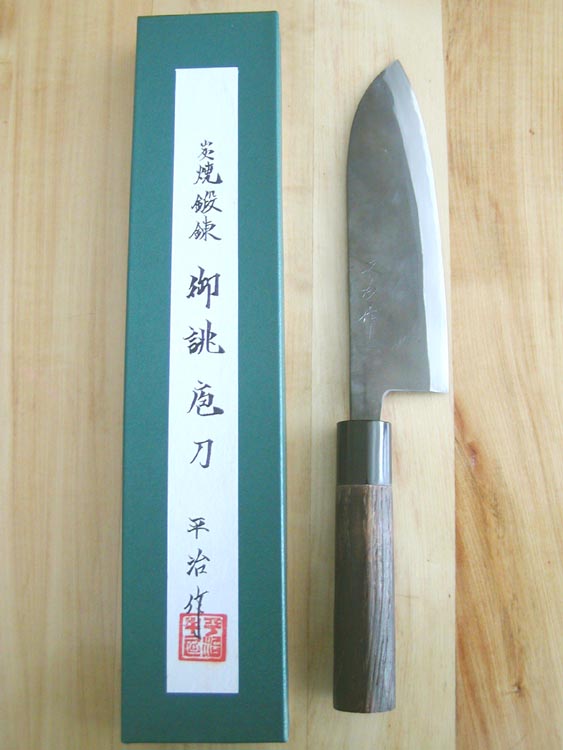
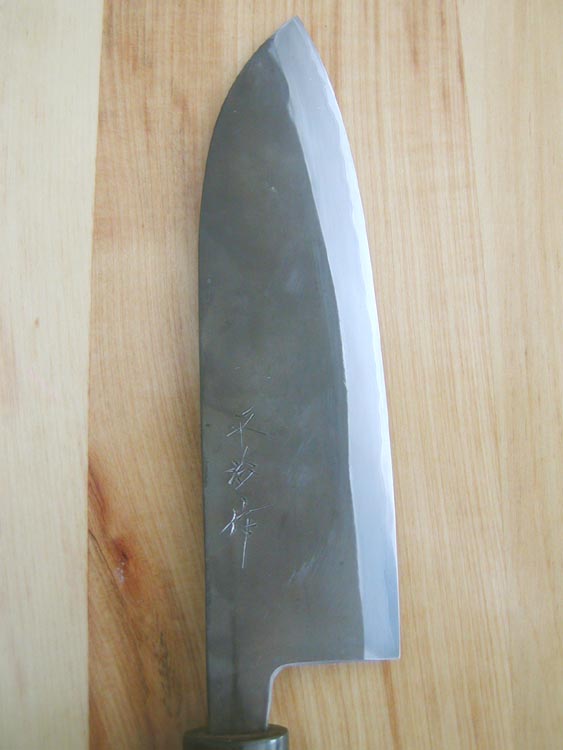
You can see that the steel has been handforged (wavy lamination line.)
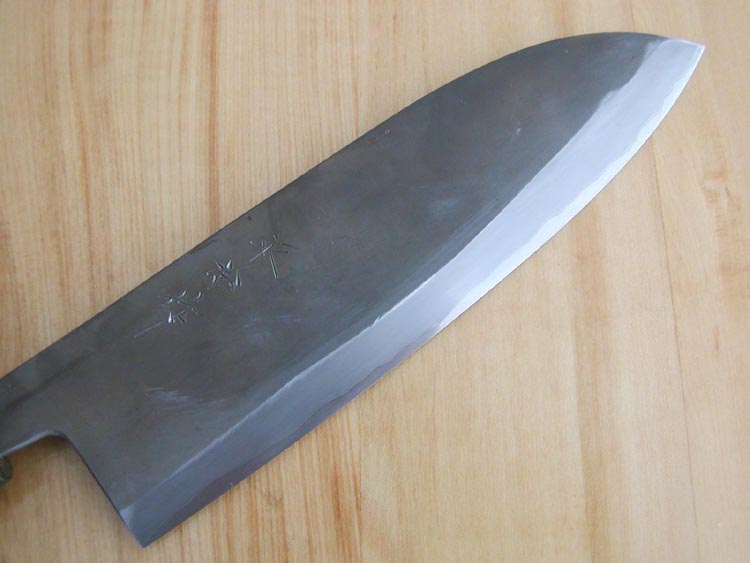
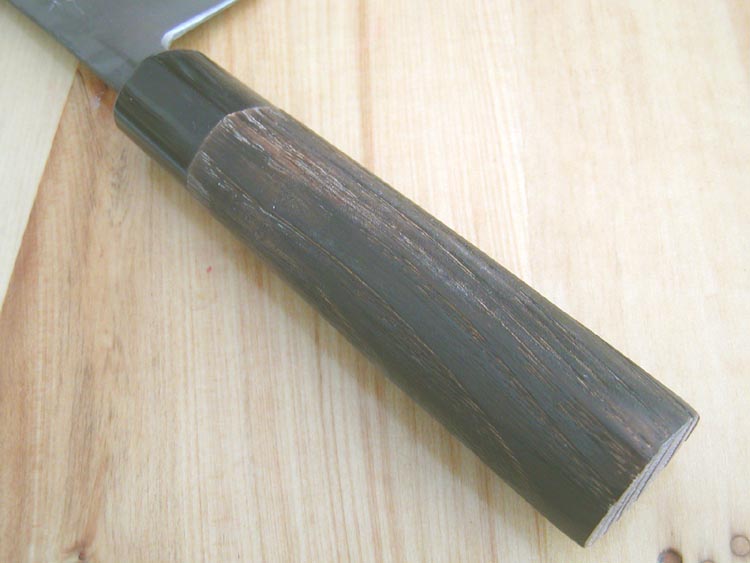
Beautiful burnt chestnut with ox horn ferrule handle. By burning the handle becomes more water resistant. I recommend linseed oiling it, and it'll be even more water resistant, and will look nicer as well(^^)
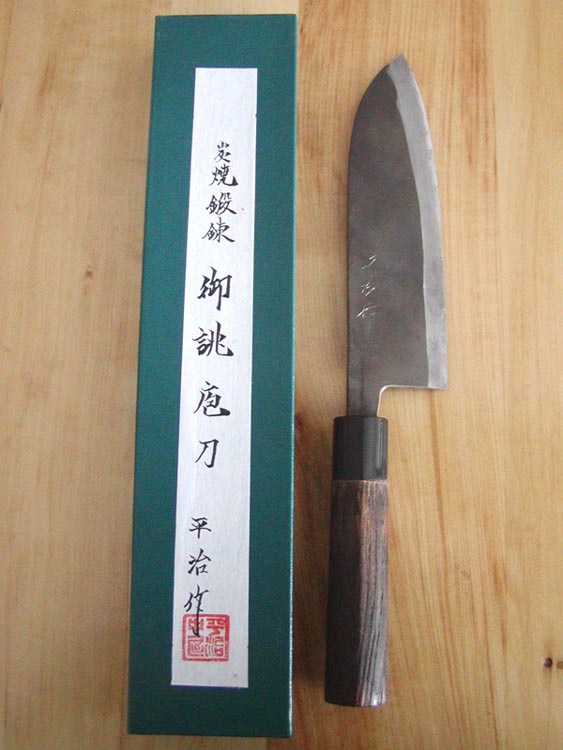
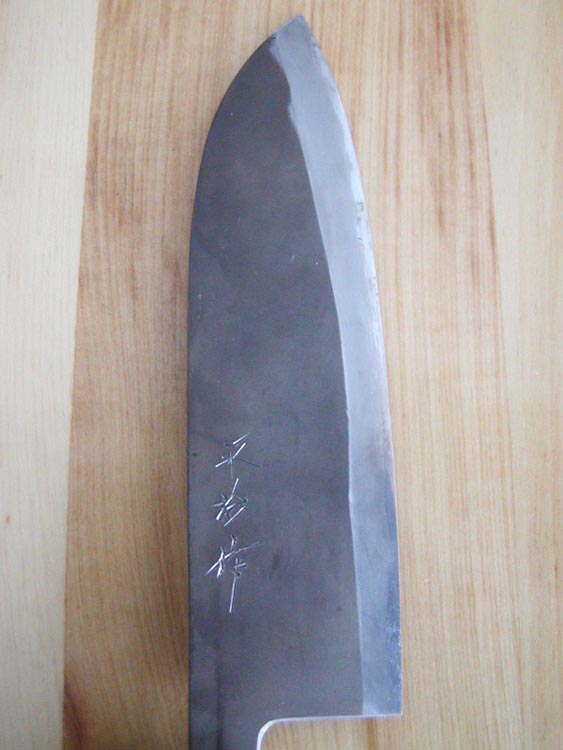
After a month or so. The jigane is stainless as well, so the entire knife is stainless.
===
This is another Inox SS knife which was custom made for a petit lady chef. Because her hands are smaller than average male chefs, we decided to attach a Yanagiba handle which is narrower than the Gyuto handle. Also because she is an Italian cuisine chef, we decided to go with the polished finish instead of the black finish, becuase we figured some of the chefs at her restaurant might not feel too comfortable with the rustic looking black finish thinking that it might not be hygenic (which of course isn't the case at all). To finish it off the blade was thinned to the limit to decrease the weight of the knife, so it is only about 2mm at the thickest point. This is the wonderful thing about Heiji, his flexibility in trying to comply to whatever need the chefs and the craftsmen have as much as possible. He never tries to press his belief in the tool design to the users.
As a person Heiji he is a very very confident person, and some people might mistake him as an over confident or even arrogant person, but you'll see that is totally not the case once you start to work with him. His service is just so humble, and he tries his best to accomodate the users as much as his skill and experience permits. When he makes a mistake he never tries to talk his way out of it, but just admit it right away and does his best to recover it and goes extra miles, and when it comes to smithing he considers himself to be a lifetime student.... So in a way he has his ultimate confidence, so I really enjoy introducing his creations.
At the moment, the glamour and the already spread reputation of Shigefusa knife is attracting many of the knife fans, but
if you are using a knife daily, I strongly recommend considering the Heiji's stainless steel knife. When it comes to the daily usage, Shigefusa knives are quite tough to use because if you leave the knife unused (placed on the cutting board) for one or two minutes, it will start to rust to the point where you cannot use it to cut things that cannot be stained, like fruits and vegetables. So,unless you cook like professional chefs, where the knife will not stay unused for more than 30 secs (my chef friend is just so fast in everything, the knife doesn't have the chance to rust), then it should be okay, but still even the pros sometimes prefer using SS knives, and with Heiji's SS knives, you can take as much time as you like to cut things, and you don't even have to wipe it after use, and it won't rust (it will only patinate = turn purplish brown with the worst handling.)
So, my recommendation would be to get one Heiji SS Santoku or Gyuto for your daily cooking, and if you'd like to own a Shigefusa knife, you can get a yanagiba if you like to slice sashimi or make sushi, or a deba if you like to fillet a fish (= or we can simply say "if you fish"). Knife choice is similar to car choice. Shigefusa is like Honda NSX, Lamborghini or Ferrari, you cannot just have those for your only car. So, for your main car, you need something like Honda Civic or Suzuki Swift, and the fancy sports car as your second car. Otherwise you'd be driving an NSX to your local shops, which isn't too convenient!
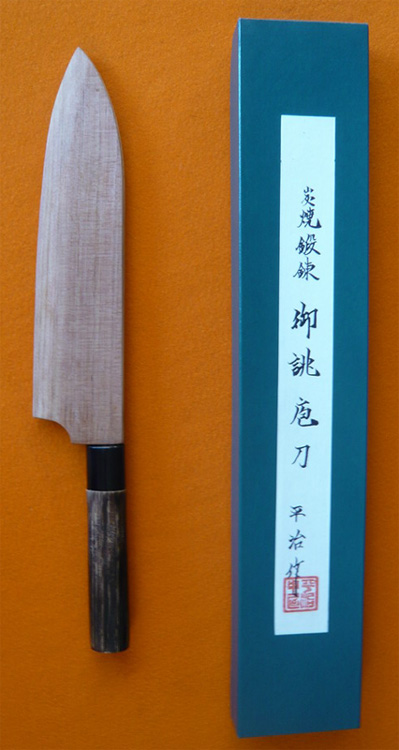


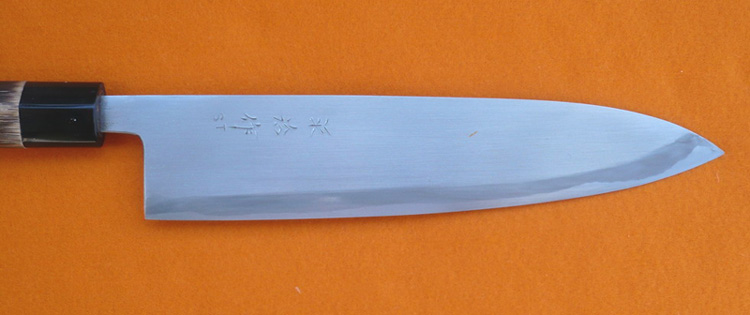
===
Stainelss Damascus, new product from Heiji.
The price is from around 30000JPY. Pls inquire for the details.
===
Various Carbon Steel knives
This is a Kitaeji (mutlilayered steel base) chef's knife made by Heiji. You should see much similarity in this knife with Shigefusa's. Heiji is a brother apprentice of Shigefusa to Iwasaki Shigeyoshi. The steel is a special Swedish steel (very pure carbon steel, which is similar to White Steel #1 but purer) sellected by Iwasaki-san himself. 36000JPY
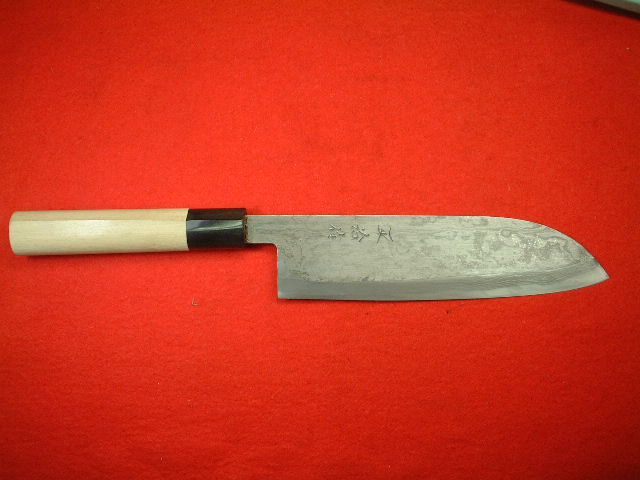
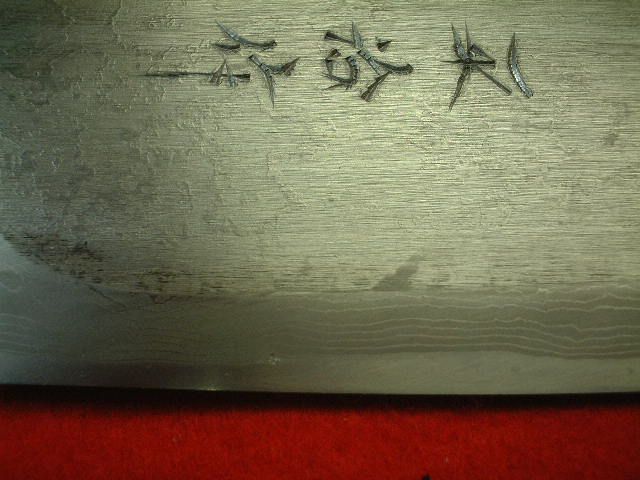
===
I have hand finished one of Iwasaki Special Swedish Steel Kitaeji Santoku, and brought it to a Shigefusa style finish. With very rare white ferrule (very difficult to find, basically not available anymore). SOLD
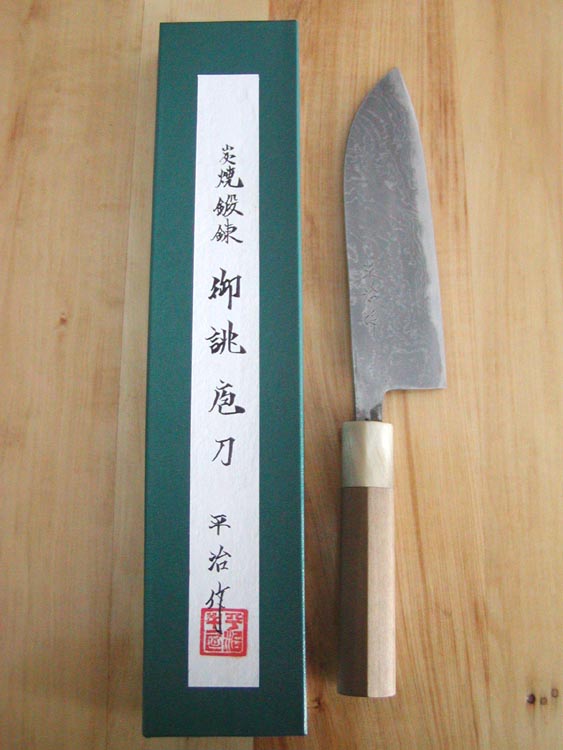
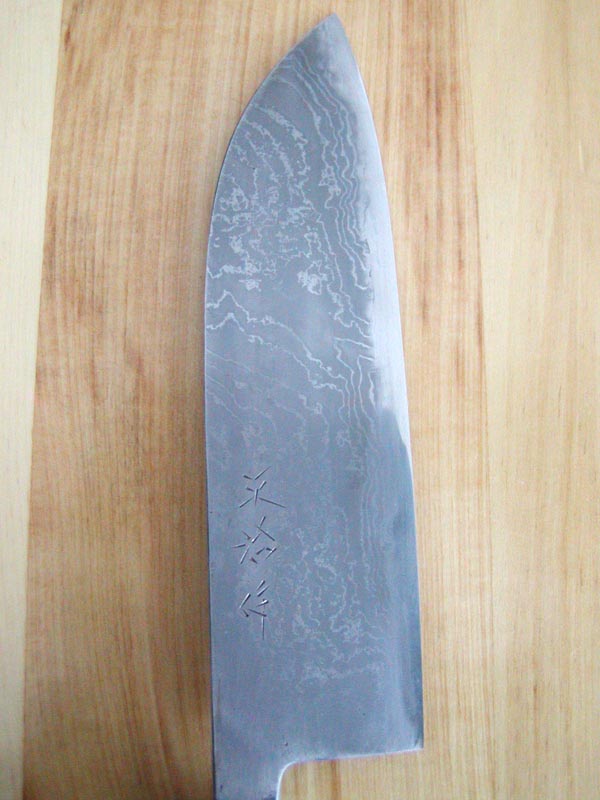
===
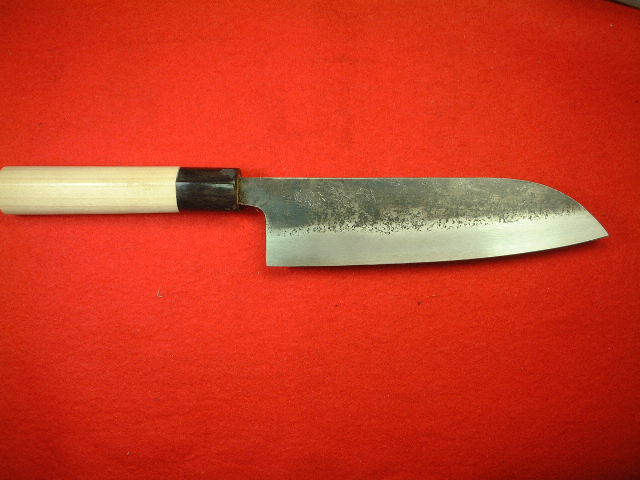
Black Finish Santoku 20000
The steel is White Steel #1(!) Waterbuffalo horn ferrule on traditional Hou wood handle.
You can choose Iwasaki special steel as well. 32000
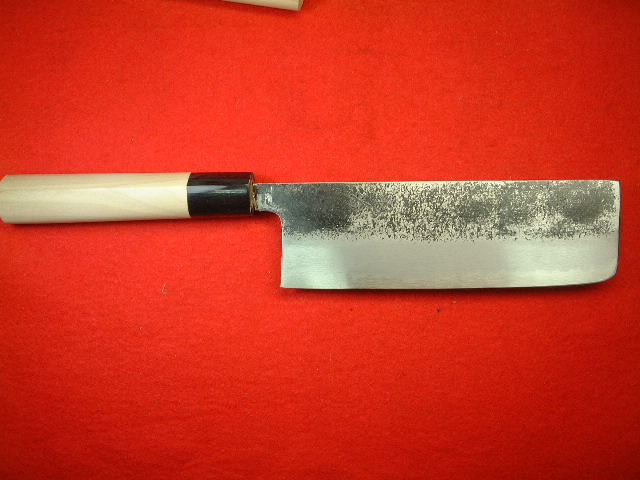
Black Finish Nakkiri 18000
The steel is White Steel #1(!) Waterbuffalo horn ferrule on traditional Hou wood handle.
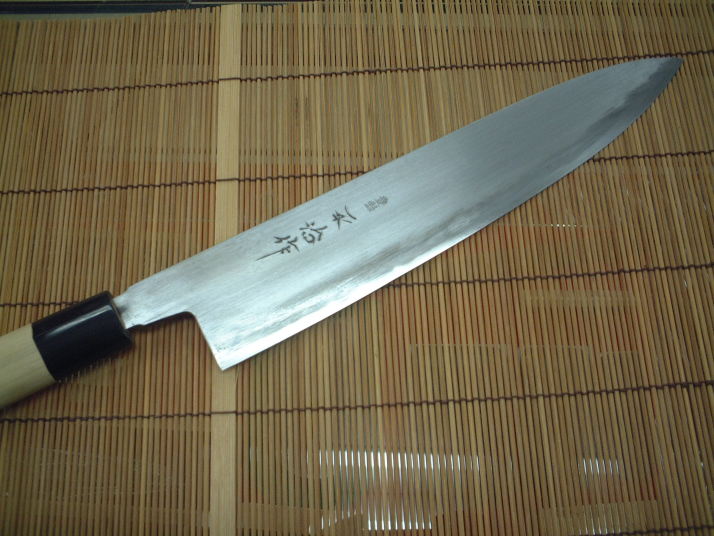
Kasumi Wa Gyutou
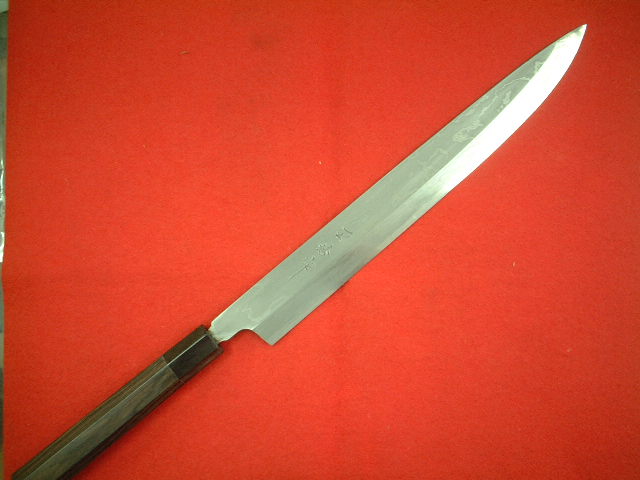
Kitaeji Yanagiba
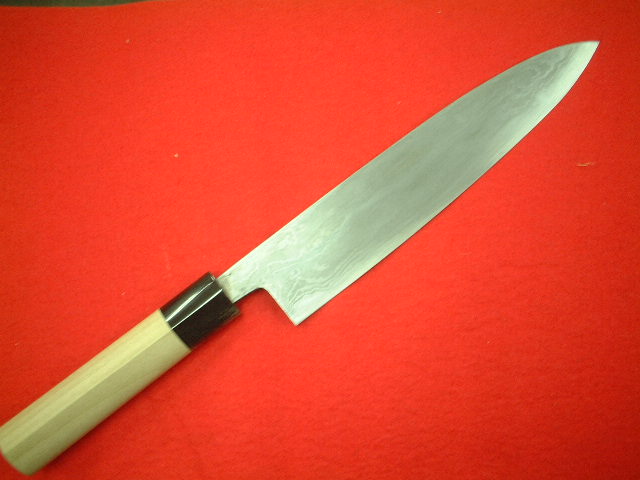
Limited edition Kitaeji Gyutou
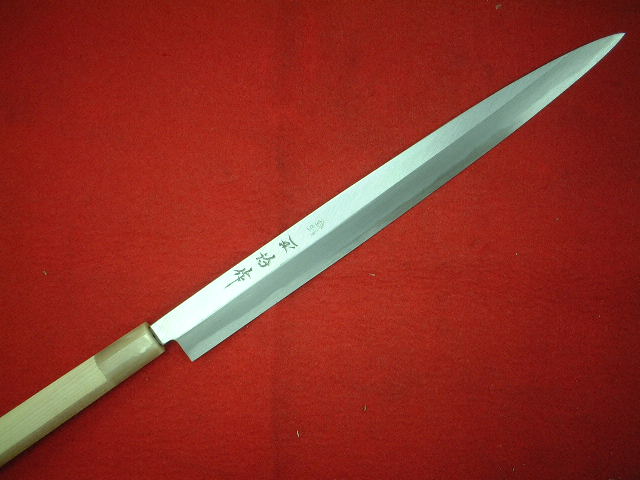
Kasumi Yanagiba
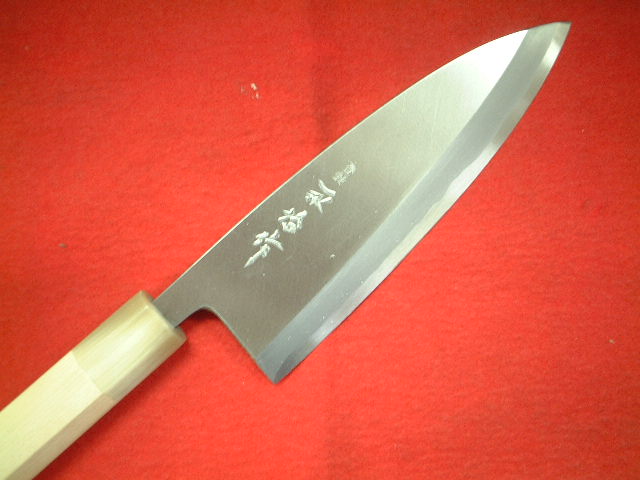
Kasumi Deba
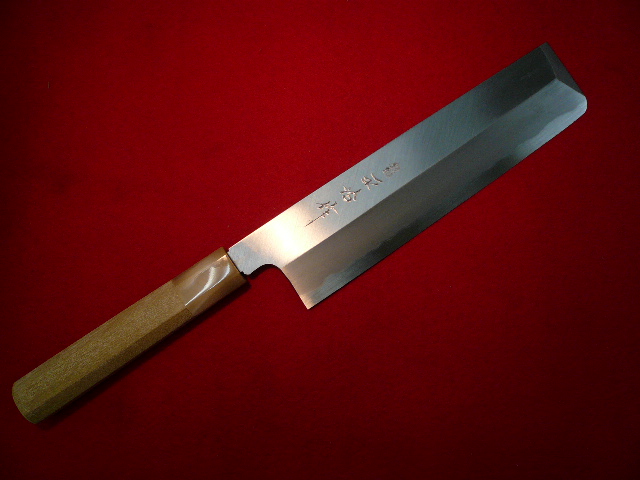
Kasumi Usuba
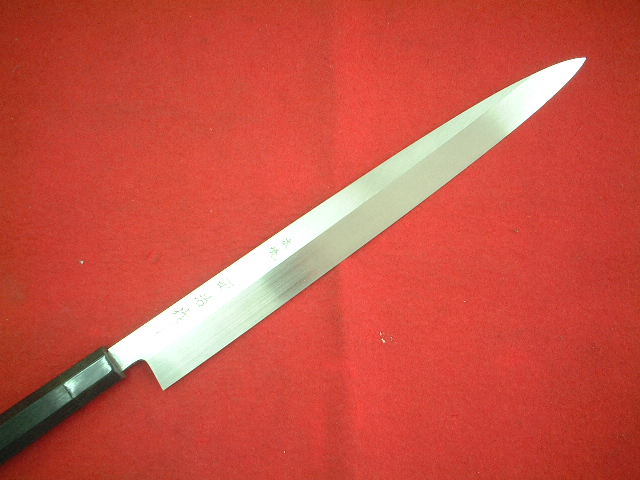
Hon-yaki Yanagiba
Hon-yaki is a highly intricate Japanese sword forging technique, which uses only steel unlike usual laminated tools. The blacksmith places yakiba-tsuchi (mud) thinner close on the edge and thicker on the body and wait until it dries completely. Then he place the mud applied blade carefully into the hearth and when it is heated up to the hardening temperature range he quickly pulls it out of the hearth and plunge it into the water. The edge is cooled faster thus becomes harder, and the core slower thus softer. Lamination technique was initially a mimicking of this Hon-yaki technique. Japanese swords hamon (wavy pattern) is created in this fashion.
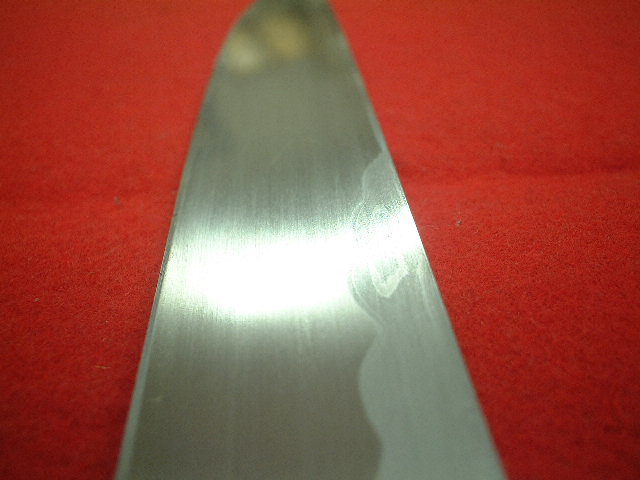
Long way ground hollow, finished by natural stone. The most expensive way of finishing the back hollow.
